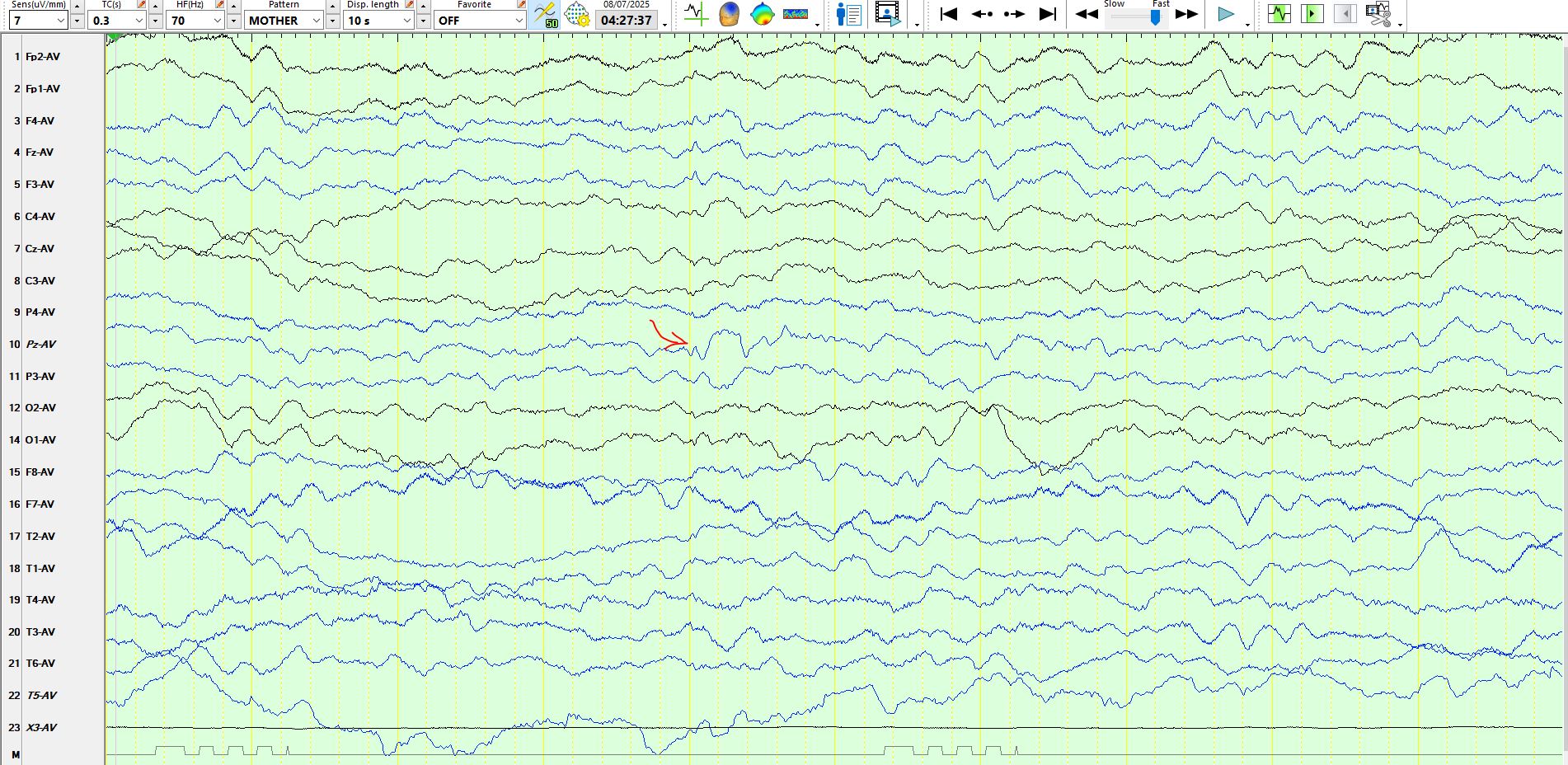One doesn't see the following waves very often:
In the above page, the occipital rhythmic delta waves are seen on the left, but in the following examples these are seen bilaterally;
...
Have a look at the following few pages from an EEG of a patient who is asleep. Try to come to a conclusion before reading the comments at the bottom.
.
Page two:
Page 3:
P...
You may or may not have heard of migrating partial seizures of infancy (Epilepsy of infancy with migrating focal seizures). One of the characteristic features of these seizures are runs of alpha frequ...
Have a look at the following page of the EEG and count the number of spikes.
In the days predating digital EEG, the bulk of the routine EEG recording was performed in the above manner. Depen...
This is certainly not a seizure, but the fleeting appearance of alpha frequencies over the parietal regions in a patient who is drowsy.
Contrast this with fleeting alpha rhythms upon eye clos...
Consider the following page of a young adult. Try and identify the nature of the discharges that correspond to the red lines at the bottom of the page. The patient is asleep.
In t...
Have a look at the following consecutive pages and try to arrive at a diagnosis.
Then look at these consecutive pages
Here is another page from the...
I get sent a lot of these. If the patient has previously had video-EEG recordings, in most instances I feel confident about the nature of the seizures (epileptic versus non-epileptic and focal versus ...
Most of the time there should be little difficulty in distinguishing these, but sometimes there are waves which mimic sharp waves and spikes. Have a look at the following waves at F8 and M2
I...
I previously posted a technique to separate delta waves from preceding waveforms so that delta waves associated with background rhythms are not over-interpreted. A vaccine against overcalling
Sometim...
Background rhythms vary quite a lot from one person to the next.
If you count carefully, you will find 13 Hz rhythms primarily over the occipital regions of the above patient. These are re...
Consider the following page;

Although the discharges resemble spike-and-wave, if you look backwards or forwards in the top 2 channels, you will recognise similar sharply contoured waves. Thes...

















